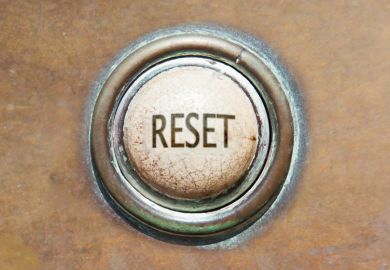What if we broke every rule in the book and suppressed the urge to try to talk anyone into anything? That means no “simple take-home message”, no “compelling story”, no rhetorical tricks, no “call to action” or highlighting of selective evidence, nothing to try to sway people one way or another.
What if we simply said what we know, in as balanced a way as possible, stating what we don’t (yet) know and being upfront about our doubts or uncertainties? How would that go down with the public?
Unthinkable? The end of public argument as we know it? We’ve been running some experiments.
The difference is between informing and persuading. It’s not a hard and fast distinction. Pure information without hint of persuasion is elusive, some might say illusory. And one’s not right and the other wrong. If the theatre’s on fire, shouting “get out or die!” is plainly in the public interest.
But persuasion can have a cost. Give your message a hard sell and people might wonder if they can trust you, especially if you claim to be just giving them facts or “the science”. And when they feel pushed – such as over measures to reduce obesity or, most topically, over Covid vaccines – they can push back.
Persuasion also raises ethical questions. We all have our own objectives and values and often want straight information to make our own decisions. We’d naturally be wary of allowing surgeons to talk people into an operation they’d made an informed decision against.
On the other hand, a world without persuasion is inconceivable. People believe in rights and wrongs and want to say why. Almost everything a government wants to do, for example, requires other people to do things too. And if they don’t attract the votes to get elected, they don’t get the power to implement their policies in the first place. That means campaigning and persuasion. Policy requires departments with different objectives, public and private interests, and, of course, scientific and political advisors all to make their case. Isn’t that how the world works?
Often, yes. But is persuasion so much the norm that it has crept too far? When everyone – even, increasingly, scientists and other academics – shouts their case, do we all shout louder? Is the “just inform” option considered in cases where it might be more a more ethical – and even more effective – approach?
The temptation to apply a subtle thumb to the scale is strong: in politics, science, media, everywhere. There is always an urge to “strengthen” the text, present a “helpful” selection of data, cut out uncertainty for “clarity” or because it “weakens the message”, slide from a vague association to an assertion of causality, produce a tidy narrative around emotionally compelling stories. Some of these we’re actually encouraged to do.
What if we didn’t? Our experiments at the Winton Centre for Risk and Evidence Communication were designed to see how people react according to where a message sits on the line from inform to persuade. To our knowledge, no one had previously done this systematically.
We took two topical themes: vaccination against Covid-19 and plans for a new nuclear power station. We presented participants either with a text based heavily on current government messaging (that is, designed to persuade), or one modified to meet our principles of informative trustworthiness. In the latter, pros, cons and uncertainties were made explicit, and the information was framed as a choice for people to weigh up for themselves.
How did our volunteers react? One, they noticed the difference; they know when they’re being persuaded. Two, overall, they reacted noticeably better to “pure information”.
The results are especially interesting concerning those who were already anti-vax or anti-nuclear. They trusted the informative message more. They trusted the messenger more. They felt less angry. They were less likely to mentally argue with the text. We’ll publish full results soon; we think they deserve attention.
There is a lesson in this for us all. Hence, in conjunction with Sense About Science (a UK charity that advocates for the public understanding of science) and the UK’s Science Media Centre, we’re looking for the best examples of useful and trustworthy communication this year. The Harding Prize, worth £3,141.59, will recognise the speech, pamphlet, Twitter thread, website or whatever it may be that best helps people make up their own minds, about almost any subject. There’s also a Weasel Words award open to nominations for the worst example of miscommunication, bad evidence, or untrustworthy communication trying to look helpful.
Ask yourself: who would I ask if I wanted clear information but not to be leant on? Who would I ask, for example, if I wanted to know whether it made sense to buy an electric car, to build a nuclear power station, or to expand or clamp down on immigration?
Above all, for readers of Times Higher Education, the question is: should I ask a university? Maybe they’ll flood us with entries; we’d be delighted. But do they have enough examples to draw on? Ought they be more involved in providing this kind of information publicly – and not just behind the scenes, at the behest of politicians? And if not, why not?
Michael Blastland is a freelance writer and broadcaster and a member of the board of the Winton Centre for Risk and Evidence Communication at the University of Cambridge.





